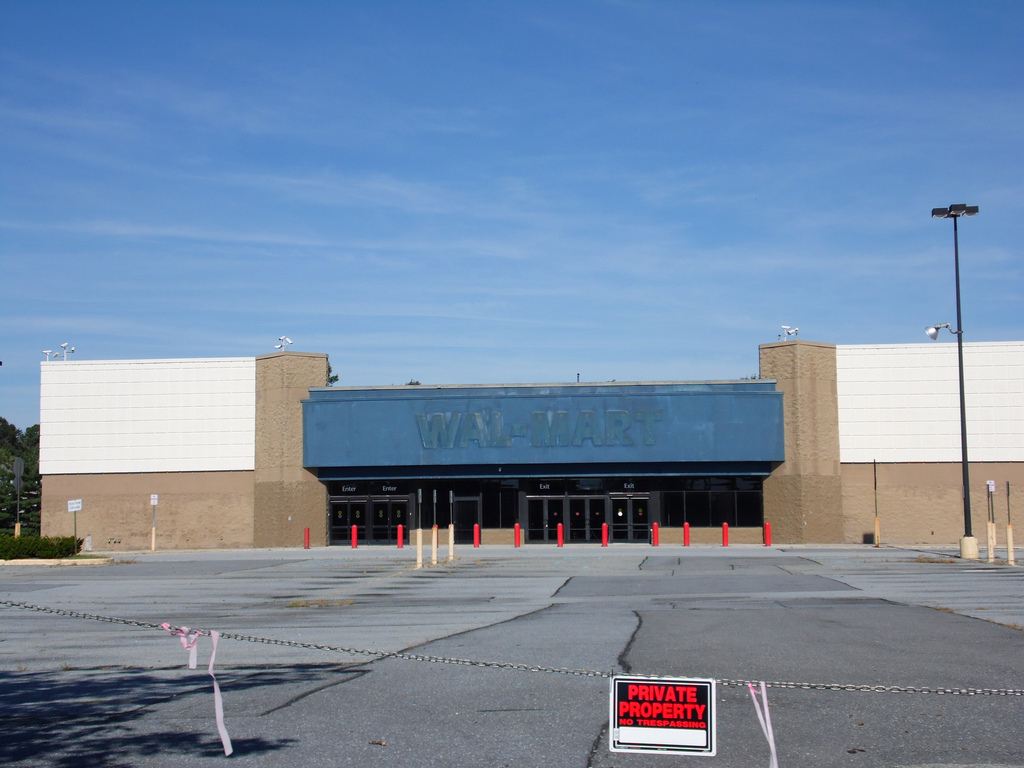
By Doug Stephens
Walmart is doomed. And they’re not alone. Macy’s, Tesco, Target and BestBuy – to name only a few – are also coming to an end, but not for the reasons one might immediately assume. Their demise will have nothing to do with a failure to master omnichannel retailing, harness big data analytics, or conquer mobile commerce – or any other technology for that matter. They will not run out of vendors to buy from, or run short of products to sell.
Instead, their impending fall will come as a consequence of something far more intrinsic, insidious and debilitating. They will die because the very business structure that made them so powerful now renders them slow moving targets, ripe for eradication.
The Network Strikes Back
These businesses, and others like them, are empires, built in an era where being an empire was the only sure path to strength, power, and competitive dominance. Walmart, Tesco, Macy’s, and the like are products of an age where to be successful as an organization was to be inherently monolithic, omnipotent, and isolated. An age where cornering a market was only possible after massive capital investment, marketing spend and infrastructure development. The strangle holds these empires achieved in their categories made them darlings of the investment community. In fact, famed investor Warren Buffett has often been noted to seek out and invest in companies that he believes have, as he calls it, the “widest competitive moat” around them; island empires reigning supreme in their markets.
In the industrial era Buffett’s strategy made perfect sense.
In the post-Internet era however, business empires are steadily giving up ground to networks. This is something my friend and colleague Gerd Leonhard has written and spoken about extensively; positing the idea that in a world that is increasingly interconnected and digitally connectable, standing alone as a monopoly is fast-becoming impossible.
I would go even farther to say that it’s not only increasingly difficult to compete as an empire, it’s corporate suicide to try.
Observe almost any vertical and I suspect you’ll see what I mean. For example, Airbnb, now a mere eight years old, will put more people in more rooms this year than the Hilton Hotel chain. Car service Uber now has more drivers in New York than Yellow Cabs. YouTube’s ad revenue will soon rival that of CBS. And while retail behemoth Walmart has 60,000 suppliers, its’ supply chain is dwarfed by networked rival Etsy that has an astonishing 850,000 vendor partners. It’s becoming abundantly clear that networks, not empires, are the retail and service models of the future.
Networks Eat Empires For Breakfast
Because empires are based on ownership and control, they are inherently capital intensive and scale very slowly. They place the wellbeing of the empire above all other stakeholders, often resulting in revolt from shareholders, employees and even customers. Empires also tend to operate according to an arbitrary set of enforced standards and penalties that are exacted unilaterally on vendors and other partners suspected of being out of compliance. Because they tend to be more insular and secretive in their innovation efforts, empires adapt to changing consumer and market dynamics at a glacial rate. And lastly, because so much organizational energy goes into simply sustaining the empire itself, it depletes energy that could be spent delighting customers, thus beginning a downward spiral of value.
Networks on the other hand, are capital-light, structurally lean and scale rapidly. They operate on transparency and a sense of shared ownership with peer-to-peer trust and governance. Success of the network ultimately depends on a balanced scorecard of stakeholder interests, from shareholders to employees and network partners. They are more fluid, flexible and adaptable to change, in large part because they offer an intrinsically broader, collective market intelligence. And because networks are a gathering of “long-tail” offerings, they often provide more interesting, niche and higher margin items than empire businesses that need to appeal to mass tastes and preferences to support their higher cost structures. Most importantly, because networks demand less energy devoted to maintaining needless infrastructure, all members of the network can dedicate more of their energy to delighting customers, thus creating a virtuous cycle of value back to the network as a whole . 
Could chains like Walmart and others evolve into networked businesses? Could they transition from autocratic owners of empires to become collaborative operators of platforms? It’s possible but I suspect it’s highly unlikely. The empire mentality runs deep in the DNA of old era companies.
What does seem certain, however, is that the great businesses of the new era will not be those that build the deepest moats around their brands but rather those that construct as many enduring bridges as possible.

